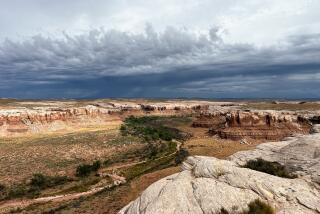Big Sur Scenic Protection Bill
It is unfortunate that the article (Editorial Pages, Sept. 9) by George T. Frampton Jr. of the Wilderness Society, touting Sen. Pete Wilson’s Big Sur National Forest Scenic Area bill, repeats Wilson’s own deceitful promotion of this legislation.
Frampton states that the legislation does not call for federal annexation of private or state property. In fact, the bill contains triggering mechanisms that are deliberately designed to allow for the condemnation of private and state lands. The bill further allows private lands to be condemned through a 25-year tenancy section that could finally yield virtually no compensation whatsoever to the property owner.
Also, contrary to Frampton’s statements, federalization of many areas has most certainly dramatically increased tourist visitation. Even well known areas once federalized have suffered enormous increases in visitation.
National Parks Director William Penn Mott has often alluded to the similarities between Big Sur and the Blue Ridge Mountains National Parkway. In the past 10 years alone, annual visitation there has increased by 6 million people.
Frampton fails to mention that the managing agencies of federal areas must publicize their acquisitions. The huge pile of brochures, booklets and advertisements touting the Blue Ridge area are certainly in great part responsible for this increase in tourists. Big Sur, in contrast, has had a fairly steady 3 million visitors a year. Much more than that would have a devastating effect both on the local fragile ecology and on the current quiet, uncrowded visitor experience.
No one who loves Big Sur would want it to become another Yosemite or Yellowstone, with their pollution, crime and environmental problems. Big Sur has more visitors than either of these areas, yet without their multiple problems.
Frampton is further guilty of fabrication when he states that a reason for the bill is to prohibit logging, oil and gas leasing and mining. These concerns are already being met by the new Los Padres Forest Master Plan.
Despite being perhaps the most attractive parts of California, Monterey and San Luis Obispo counties have remained the most unspoiled area in this state. This has not been the result of accident, but rather of the deep concern felt for the environment by the residents.
WILLIAM ERNEST BROWN
Big Sur
More to Read
Sign up for The Wild
We’ll help you find the best places to hike, bike and run, as well as the perfect silent spots for meditation and yoga.
You may occasionally receive promotional content from the Los Angeles Times.






